
The Major Arcana are the named or numbered cards in a cartomantic tarot pack, the name being originally given by occultists to the trump cards of a normal tarot pack used for playing card games. There are usually 22 such cards in a standard 78-card pack, typically numbered from 0 to 21. The name is not used by tarot card game players.

The Eight of Wands is a Minor Arcana tarot card. In the Rider–Waite deck, the card shows eight diagonal staves of staggered length angled across an open landscape with river, as designed by artist Pamela Colman Smith.

Knight of Wands or Knight of Batons is a card used in Latin-suited playing cards which include tarot decks. It is part of what tarot card readers call the Minor Arcana. Tarot cards are used throughout much of Europe to play tarot card games.
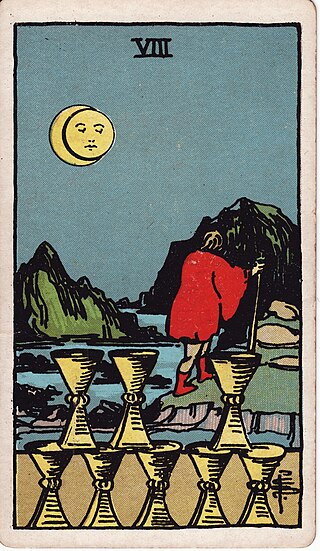
The Eight of Cups is a card used in Latin-suited playing cards, which include tarot decks. It is part of what tarot card readers call the "Minor Arcana"
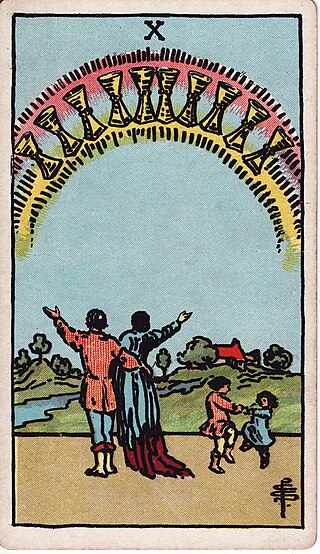
The Ten of Cups is a Minor Arcana tarot card.
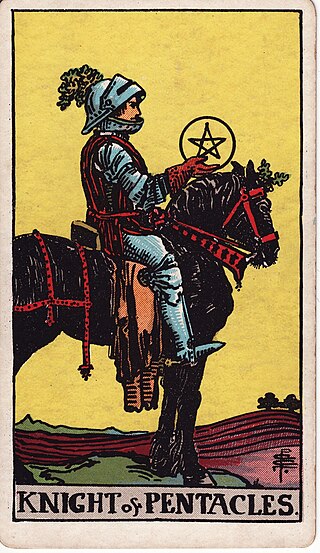
The Knight of Coins is a card used in Latin-suited playing cards which include tarot decks. It is part of what tarot card readers call the "Minor Arcana". The coins" suit is sometimes referred to as "pentacles" or "discs" instead.

Ace of Coins is a card used in Latin-suited playing cards, which include tarot decks. It is part of what tarot card readers call the "Minor Arcana" The coins suit is often called "Pentacles" by tarot readers.
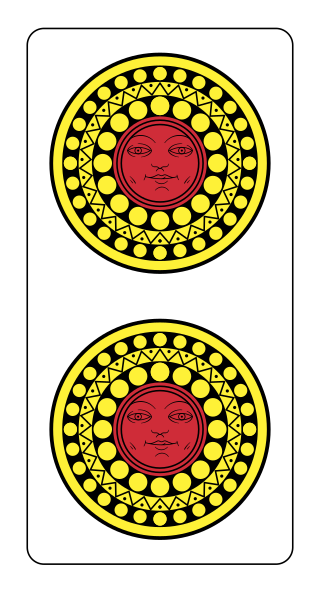
The Two of Coins, or Two of Pentacles, is a card used in Latin-suited playing cards which include tarot decks. It is part of what tarot card readers call the "Minor Arcana."

The Three of Coins is the third card in the suit of coins. The suit is used in Spanish, Italian, and tarot decks.

Four of Coins is a card used in Latin-suited playing cards, which include tarot decks. It is part of what tarot card readers call the "Minor Arcana".
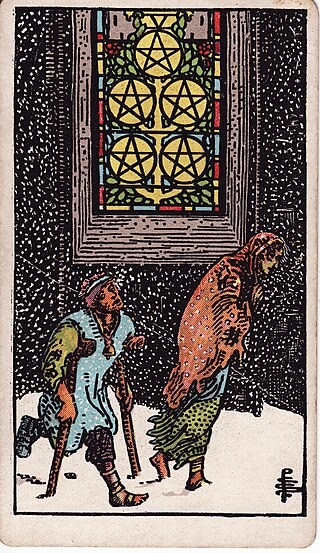
Five of Coins is a card used in Latin-suited playing cards which include tarot decks. It is part of what tarot card readers call the "Minor Arcana".

The Six of Coins, or Six of Pentacles, is a card used in Latin-suited playing cards which include tarot decks. It is part of what tarot card readers call the "Minor Arcana".

The Seven of Coins is a card used in Latin-suited playing cards which include tarot decks. It is part of what tarot card readers call the "Minor Arcana".

Nine of Coins is a card used in Latin-suited playing cards which include tarot decks. It is part of what tarot card readers call the "Minor Arcana" and represents a financially independent aristocrat.

Page of Coins is a card used in Latin-suited playing cards which include tarot decks. It is part of what tarot card readers call the "Minor Arcana".
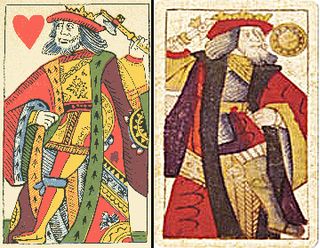
King of Coins is a card used in Latin-suited playing cards. It is the king from the suit of coins. In Tarot, it is part of what tarot card readers call the "Minor Arcana".

The Queen of Coins, also known as the Queen of Pentacles, is a card used in Latin-suited playing cards. It is the queen from the suit of coins. In tarot, it is part of what tarot card readers call the "Minor Arcana".
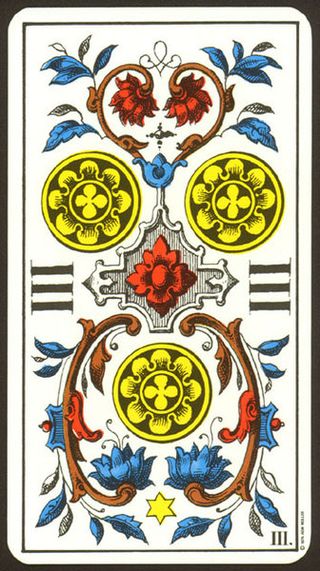
The suit of coins is one of the four suits used in tarot decks with Latin-suited cards. It is derived from the suit of coins in Italian and Spanish card playing packs.

The suit of wands is one of four suits in tarot, collectively known as the Minor Arcana. Like the other tarot suits, the suit of wands contains fourteen cards: ace (one), two through ten, page and knight, queen and king. When Tarot cards are to play Tarot card games, where wands corresponds to the suit of batons. Tarot cards came to be utilized for divinatory purposes by esotericists such as Eliphas Levi and were regularized into the divinatory form most known today by the Hermetic Order of the Golden Dawn and the Rider–Waite Tarot, created by a Golden Dawn member.

The suit of goblets, more often known in modern times as the Suit of Cups, is one of four suits of tarot which, collectively, make up the Minor Arcana. They are sometimes referred to as chalices. Like the other suits of the Minor Arcana, it contains fourteen cards: ace (one), two through ten, page, knight, queen and king. Historically, the suit represented the First Estate. Tarot cards were originally designed for card play and are still used throughout much of Europe to play various Tarot card games. However, in English-speaking countries, where the games are largely unknown, Tarot cards came to be utilized primarily for divinatory purposes. In modern card games, the equivalent suits are Hearts or Cups.




















